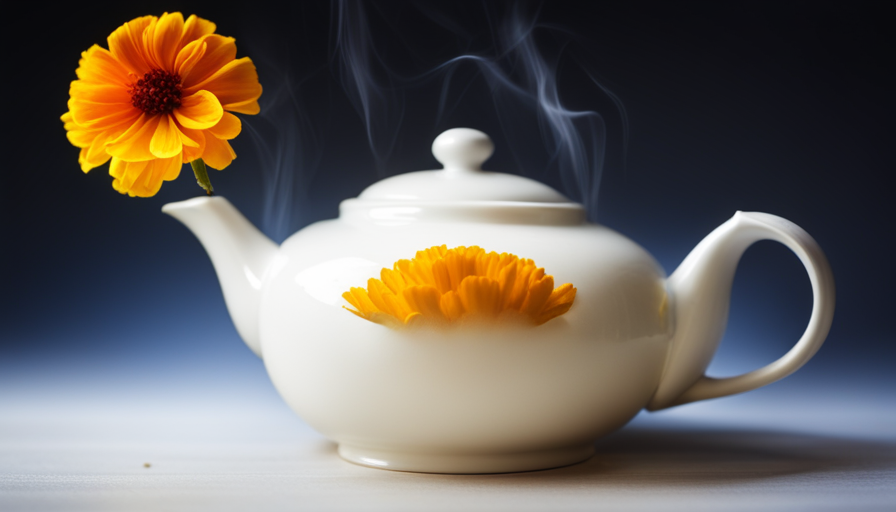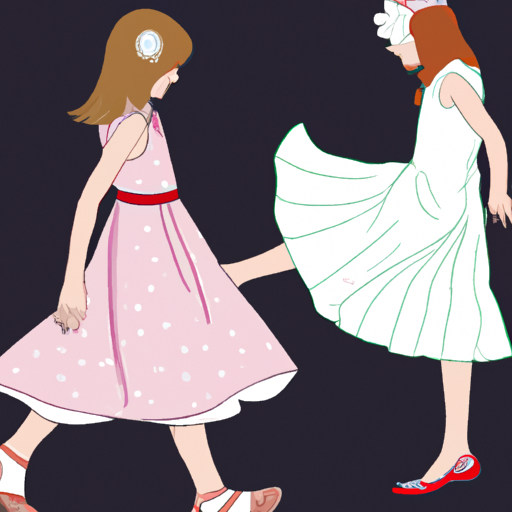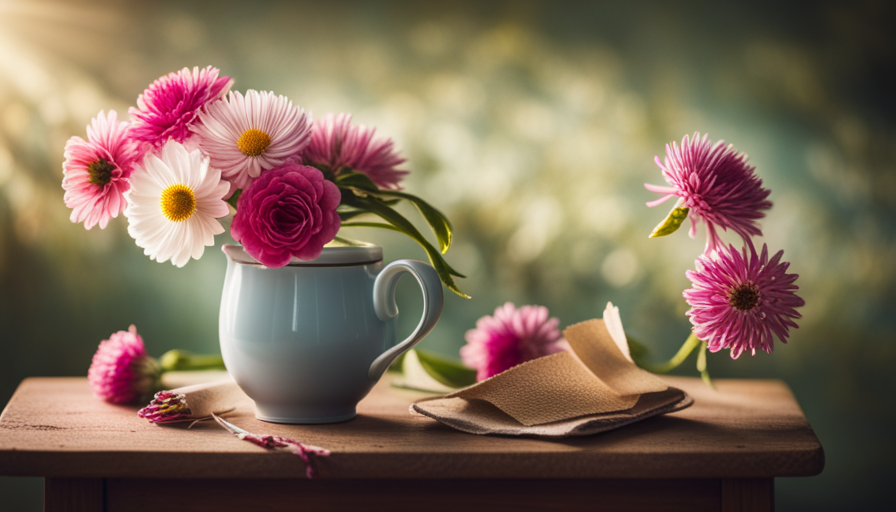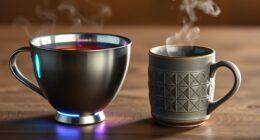Picture a garden where fragile petals open up like the pages of a book, exposing the wonders of nature’s beauty.
In this enchanting realm, one flower stands tall, captivating all who encounter its graceful form. Welcome to the world of Camellias, a genus that encompasses a wide variety of exquisite blooms.
Today, we delve into the realm of Camellia, seeking to uncover a fascinating connection: the flower that shares its genus with the beloved tea plant. As I explore this intriguing topic, I invite you to embark on a journey through time and space, discovering the captivating similarities and intriguing differences between these two botanical wonders.
Join me as we unravel the mysteries of the Camellia genus, exploring the enchanting secrets that link tea plants and their delicate floral counterparts.
Key Takeaways
- Camellias are in the same genus as tea plants.
- Both camellias and tea plants are part of the Camellia genus.
- Tea plants (Camellia sinensis) are the most important and widely cultivated species for tea production.
- Camellias have ornamental and medicinal uses, while tea plants are primarily cultivated for their leaves to produce tea.
Introduction to the Camellia Genus
Did you know that the same genus as tea plants includes a stunning variety of flowers? The Camellia genus, which encompasses over 250 species, is known for its beautiful blooms and historical significance.
Camellias are native to East Asia and have been cultivated for centuries for their ornamental value. They come in a wide range of colors, including shades of pink, red, white, and even yellow. Some popular camellia varieties include Camellia japonica, Camellia sasanqua, and Camellia reticulata.
The historical significance of camellias cannot be overstated. In many East Asian cultures, they have long been associated with beauty, purity, and longevity. They have also been used in traditional medicine for their supposed health benefits. Additionally, camellias played a prominent role in the tea trade. The tea plant, Camellia sinensis, is a member of the Camellia genus and is the source of the leaves used to make tea.
Camellias are a fascinating and diverse group of plants, with a rich history and cultural significance. Now that we’ve explored the camellia genus, let’s delve into the tea plant: Camellia sinensis, and its role in the world of tea production.
The Tea Plant: Camellia sinensis
You can find a delicate and aromatic member of the Camellia family that’s often used to brew a soothing and invigorating beverage. The Tea Plant, scientifically known as Camellia sinensis, is a remarkable plant with numerous varieties.
When it comes to tea production, the Camellia sinensis is the most important and widely cultivated species. Here are some key characteristics of this remarkable plant:
-
Leaves: The Tea Plant has evergreen leaves that are dark green and glossy, providing an attractive visual appeal.
-
Flowers: The plant produces small, white flowers with yellow centers. These flowers are simple yet elegant, adding a touch of beauty to the tea gardens.
-
Growth Habit: The Camellia sinensis is an upright shrub that can reach heights of up to 3 meters. Its dense foliage creates a canopy effect, providing shade for the delicate tea leaves.
-
Cultivation: Tea plants are typically grown in tropical and subtropical regions, as they require specific climate conditions to thrive.
As we delve into the next section about the camellia flower, it’s important to understand the various camellia varieties and the techniques used in tea production.
The Camellia Flower
The Camellia family is known for its captivating and vibrant blossoms, which add a splash of color to gardens and landscapes. Camellia is a genus that includes around 250 species of flowering plants. These plants are native to East Asia and are highly valued for their ornamental purposes.
The most popular species is Camellia japonica, which is widely cultivated for its stunning flowers in various colors and patterns. Apart from their aesthetic appeal, camellia flowers have been used for medicinal purposes for centuries. The flowers contain chemical compounds such as flavonoids and tannins, which have antioxidant and anti-inflammatory properties.
Traditional Chinese medicine utilizes camellia flowers to alleviate symptoms of respiratory conditions, including cough and bronchitis. Furthermore, camellia flowers have also been used externally for their skincare benefits. The oil extracted from the seeds of certain camellia species, such as Camellia oleifera, is rich in vitamins and antioxidants, making it beneficial for moisturizing and nourishing the skin.
Moving forward to the shared features between tea plants and camellia flowers, it’s interesting to note that both belong to the same genus, Camellia. These plants share similarities in their flowers, foliage, and overall growth habit.
Shared Features between Tea Plants and Camellia Flowers
Tea plants and camellia flowers share several key features. First, their leaves and foliage are both shiny and evergreen, providing a lush and vibrant appearance year-round.
Second, both plants produce beautiful and fragrant flowers that bloom in a variety of colors, adding a touch of elegance to any garden.
Lastly, tea plants and camellia flowers have similar growth habits and requirements, thriving in well-drained soil and partial shade.
Leaves and Foliage
Camellia sinensis, like its botanical relative, produces an array of vibrant and lush foliage. The leaves of tea plants are characterized by their elliptical shape and smooth texture. They are typically dark green in color, with a glossy sheen on the surface. The edges of the leaves are serrated, providing an interesting visual texture.
Tea plants have a unique ability to retain moisture, which is reflected in their thick and waxy foliage. This adaptation allows them to thrive in humid environments. Pruning techniques for tea plants focus on maintaining the desired shape and size of the plant, as well as promoting air circulation and light penetration. Proper pruning helps to ensure optimal leaf growth and tea production.
Moving on to the subsequent section about flowers and blooms, the camellia plant also produces beautiful and fragrant flowers.
Flowers and Blooms
In my previous discussion on leaves and foliage, I noted the importance of these structures in the tea plant’s growth and development. Now, let’s shift our focus to the fascinating world of flowers and blooms in tea plants. Tea plants belong to the genus Camellia, which includes various species and cultivars. These camellia varieties produce stunning flowers that come in a range of colors, including white, pink, and red. The flowers of tea plants hold significant floral symbolism in different cultures, representing love, purity, and beauty. To help you appreciate the diversity of tea plant flowers, I have prepared a table showcasing four popular camellia varieties and their respective flower colors:
| Camellia Variety | Flower Color |
|---|---|
| Camellia sinensis | White |
| Camellia japonica | Pink |
| Camellia sasanqua | Red |
| Camellia reticulata | Varied |
As we delve further into the growth habits and requirements of tea plants, you will gain a deeper understanding of these remarkable plants.
Growth Habits and Requirements
Let’s explore the fascinating ways these remarkable plants grow and what they need to thrive.
Tea plants, belonging to the genus Camellia, have specific growing conditions that are crucial for their success. These plants prefer acidic soil with good drainage and ample sunlight. They thrive in a temperate climate, with temperatures ranging between 50 to 80 degrees Fahrenheit. Regular pruning is essential to maintain their shape and promote new growth. Pruning techniques involve removing dead or damaged branches and shaping the plant to encourage a bushy habit. Additionally, regular watering and fertilization are necessary to ensure proper growth and development.
Tea plants have unique characteristics that distinguish them from other flowers in the Camellia genus. Transitioning into the subsequent section, let’s explore the differences between tea plants and camellia flowers.
Differences between Tea Plants and Camellia Flowers
Imagine walking through a serene garden, surrounded by delicate blossoms that share the same genus as tea plants – it’s truly a captivating sight. Although tea plants and camellia flowers belong to the same genus, there are several notable differences between them in terms of cultivation and medicinal uses.
Firstly, tea plants are primarily cultivated for their leaves, which are used to make various types of tea. In contrast, camellia flowers are grown for their aesthetic beauty and are commonly used in gardens and landscaping. While tea plants require specific conditions such as acidic soil and a humid climate, camellias are more adaptable and can thrive in a wider range of environments.
Furthermore, tea plants have long been recognized for their medicinal properties and are often used to produce herbal teas with various health benefits. On the other hand, camellia flowers are not commonly used for medicinal purposes but are prized for their ornamental value.
Transitioning into the subsequent section about camellias in gardens and landscaping, it is fascinating to see how these beautiful flowers can enhance any outdoor space.
Camellias in Gardens and Landscaping
Strolling through a garden filled with captivating camellias is like walking into a paradise of vibrant colors and exquisite beauty. These stunning flowers come in a wide range of varieties, each with its own unique characteristics. From the delicate and elegant blooms of the Camellia japonica to the charming and fragrant Camellia sasanqua, there is a camellia for every taste and preference.
In caring for these magnificent plants, it’s important to provide them with the right conditions. Camellias thrive in well-drained soil that’s slightly acidic. They prefer partial shade, especially during the scorching summer months. Regular fertilization and adequate watering are essential for their healthy growth and development.
When it comes to landscaping, camellias can be used to create stunning focal points or add a splash of color to any garden. They can be planted in containers, used as hedges, or even trained to grow on trellises. Their versatility and beauty make them a popular choice among gardeners and landscapers alike.
Conservation and preservation efforts play a crucial role in ensuring the survival of these remarkable plants. By protecting their natural habitats and promoting sustainable cultivation practices, we can safeguard the future of camellias for generations to come.
Transitioning into the next section, it’s important to understand the significance of these conservation and preservation efforts in order to fully appreciate the value of these remarkable flowers.
Conservation and Preservation Efforts
In discussing conservation and preservation efforts for camellias and tea plants, it’s important to consider the threats that these species face. Both camellias and tea plants are vulnerable to habitat loss, climate change, disease, and invasive species.
However, there are several conservation organizations and initiatives working to protect these plants, such as the International Camellia Society and the Tea Research Association. Additionally, individuals can contribute to these efforts by supporting these organizations, planting camellias and tea plants in their own gardens, and spreading awareness about the importance of conserving these species.
Threats to Camellias and Tea Plants
One major threat to camellias and tea plants is the spread of diseases and pests. These plants are susceptible to various pathogens and insects that can cause significant damage and even death. To combat this threat, it’s essential to implement effective conservation efforts and follow certain gardening tips.
-
Conservation Efforts:
- Proper sanitation practices, such as regularly cleaning garden tools and equipment, can help prevent the spread of diseases.
- Planting disease-resistant varieties and practicing crop rotation can minimize the risk of infection.
-
Gardening Tips:
- Providing adequate watering and fertilization can promote plant health and increase resistance to pests and diseases.
- Regularly inspecting plants for signs of infestation or disease can allow for early detection and prompt treatment.
By implementing these conservation efforts and following gardening tips, we can protect camellias and tea plants from the threats posed by diseases and pests. This proactive approach ensures the longevity and sustainability of these valuable plant species.
Conservation Organizations and Initiatives
There are numerous conservation organizations and initiatives dedicated to protecting and preserving these valuable plant species, ensuring their long-term survival. These organizations employ various conservation strategies to address the threats faced by endangered species like Camellias and Tea Plants.
One such strategy is the establishment of protected areas, where these plants can thrive in a controlled environment. Additionally, conservation organizations work towards raising awareness about the importance of these plants and the need for their conservation. They also conduct research to better understand the ecological requirements of Camellias and Tea Plants, and develop effective management plans for their conservation.
By supporting these organizations and initiatives, individuals can contribute to the preservation of these plants and help secure a future where they can continue to thrive.
How Individuals Can Contribute
You can make a meaningful impact by supporting conservation organizations and initiatives dedicated to preserving these valuable plant species, ensuring their survival for future generations. Here are a few ways individuals can get involved and make a positive environmental impact:
-
Donate: Contribute financially to conservation organizations working towards the preservation of plant species like camellias and tea plants. Your donations can help fund research, habitat restoration, and educational programs.
-
Volunteer: Offer your time and skills by volunteering with local conservation organizations. You can participate in activities such as tree planting, seed collection, or invasive species removal.
-
Spread awareness: Educate others about the importance of preserving plant species and the role they play in our ecosystem. Share information on social media, organize awareness campaigns, or give presentations to schools and community groups.
-
Plant native species: Create a garden with native plants, including camellias and tea plants, to provide a suitable habitat and food source for local wildlife.
By actively engaging in these activities, individuals can contribute to the conservation efforts and ensure the survival of these valuable plant species for future generations. Now, let’s explore some interesting facts and trivia about camellias and tea plants.
Interesting Facts and Trivia about Camellias and Tea Plants
Camellias and tea plants, both members of the same genus, share a fascinating history and numerous similarities. Camellias are flowering plants that belong to the genus Camellia, which also includes the tea plant, Camellia sinensis. These plants have been cultivated for centuries and have played a significant role in various cultures around the world.
Camellias are known for their beautiful and diverse varieties. They come in different colors, shapes, and sizes, making them a popular choice for gardens and landscapes. Tea plants, on the other hand, are primarily valued for their leaves, which are used to produce the widely consumed beverage, tea. The health benefits of tea are well-documented, with studies suggesting that it may help with weight loss, heart health, and even cancer prevention.
To provide a deeper understanding of the similarities and differences between camellias and tea plants, let’s take a look at the following table:
| Camellias | Tea Plants |
|---|---|
| Flowering plants | Evergreen shrubs |
| Ornamental value | Commercial value |
| Diverse varieties | Primarily valued for leaves |
Now, let’s delve into the next section to explore popular camellia and tea plant locations. These plants can be found in various regions, each with its own unique characteristics and significance.
Popular Camellia and Tea Plant Locations
Imagine yourself walking through a lush garden filled with vibrant blooms and the soothing aroma of freshly brewed tea in the air – these are just a few of the delights you can experience in popular locations where camellias and tea plants thrive.
Tea plantations, scattered throughout regions such as China, India, and Japan, offer a mesmerizing sight with their rows upon rows of carefully cultivated tea plants. These plantations are meticulously maintained to ensure optimal growth and production of tea leaves.
One popular variety of camellia found in these locations is Camellia sinensis, the plant from which tea is derived. With its shiny, dark green leaves and delicate white flowers, this camellia is highly prized for its unique flavor and aroma. Another commonly seen camellia is Camellia japonica, known for its large, showy flowers in a range of colors, from pure white to vibrant shades of pink and red.
Visiting these locations allows you to witness firsthand the intricate processes involved in tea production, from plucking the young tea leaves to their withering, rolling, and drying. The tea plantations also offer educational tours and tastings, giving you the opportunity to savor different varieties of tea and learn about their distinct characteristics.
As you explore these popular camellia and tea plant locations, you’ll begin to appreciate the fascinating connection between camellias and tea plants. The next section will delve deeper into this connection, exploring the shared genus and the significance it holds.
Conclusion: The Fascinating Connection Between Camellias and Tea Plants
Walking through the tea plantations and witnessing the intricate processes of tea production is a truly captivating experience that deepens our appreciation for the fascinating connection between camellias and tea.
The camellia species, specifically Camellia sinensis, is the plant responsible for the production of tea. This evergreen shrub belongs to the Theaceae family and is native to East Asia.
-
Camellia sinensis: This is the species of camellia that’s cultivated for tea production. It has glossy, dark green leaves and produces fragrant white flowers.
-
Medicinal properties: Camellia sinensis has been used for centuries due to its numerous medicinal properties. The leaves contain compounds such as catechins, polyphenols, and caffeine, which have antioxidant and anti-inflammatory effects. These properties make tea a popular beverage for promoting overall health and well-being.
-
Varieties: Within the Camellia sinensis species, there are several varieties that are cultivated for different types of tea. For example, Camellia sinensis var. sinensis is commonly used for green and white teas, while Camellia sinensis var. assamica is favored for black teas.
Understanding the relationship between camellias and tea plants allows us to appreciate the rich history and cultural significance of tea. Beyond its delicious taste, tea offers a multitude of health benefits, making it a truly remarkable beverage derived from the beautiful camellia species.
Frequently Asked Questions
How many species of camellias are there in the Camellia genus?
There are over 100 species of camellias in the camellia genus, each with its own unique beauty and charm. These flowers hold great historical significance in Asian cultures, symbolizing love, purity, and devotion. However, many camellia species are now at risk due to habitat loss and climate change. Environmental conservation efforts are vital to protect these delicate plants and preserve their cultural and ecological importance for future generations.
What are some popular cultivars of camellias used in gardens and landscaping?
Popular camellia cultivars for gardens and landscaping include Camellia japonica ‘Nuccio’s Gem’, known for its large pink flowers, and Camellia sasanqua ‘Yuletide’, admired for its vibrant red blooms. To grow and care for camellias, make sure they’re planted in acidic, well-drained soil with partial shade. Regular watering, mulching, and pruning after flowering are essential. Also, camellias benefit from protection against extreme temperatures and pests.
Are there any endangered species of camellias?
There are indeed endangered species of camellias that require our attention and conservation efforts. These rare and delicate plants are facing threats such as habitat loss, climate change, and invasive species.
To protect these species, conservation organizations and botanic gardens are working diligently to preserve their natural habitats and establish ex-situ conservation programs. By raising awareness and supporting these initiatives, we can help ensure the survival of these beautiful and unique camellias for future generations.
What are some interesting historical uses of camellias and tea plants?
Throughout history, camellias and tea plants have held significant cultural and medicinal importance. In East Asian culture, camellias have been revered for their beauty and symbolize love and affection.
Tea plants, on the other hand, have been widely used for their medicinal properties. They’ve been utilized for centuries in traditional medicine to alleviate various ailments, such as promoting digestion, boosting energy, and improving mental alertness.
The historical uses of camellias and tea plants highlight their enduring significance in society.
Can tea be made from other plants in the Camellia genus besides Camellia sinensis?
Sure, let’s talk about alternative herbal teas from the Camellia genus. While most people are familiar with tea made from Camellia sinensis, there are other species within the Camellia genus that can be used to make tea.
For example, Camellia japonica and Camellia sasanqua are both used to produce herbal teas with unique flavors and potential health benefits. These teas may offer similar health benefits as traditional tea, such as antioxidant properties and potential cardiovascular benefits.
Exploring these alternative Camellia species can provide a diverse and enjoyable tea-drinking experience.
Conclusion
In conclusion, the fascinating connection between Camellias and Tea Plants is truly remarkable. Through their shared genus, Camellia, both plants display unique characteristics and features that make them truly special.
From the delicate beauty of the Camellia flower to the rich and flavorful tea produced by the Tea Plant, these plants have captivated scientists and enthusiasts alike.
As conservation and preservation efforts continue, we can only hope to uncover more interesting facts and trivia about these incredible plants. So, join us on this journey of discovery and let the mystery of Camellias and Tea Plants unfold before your eyes.










